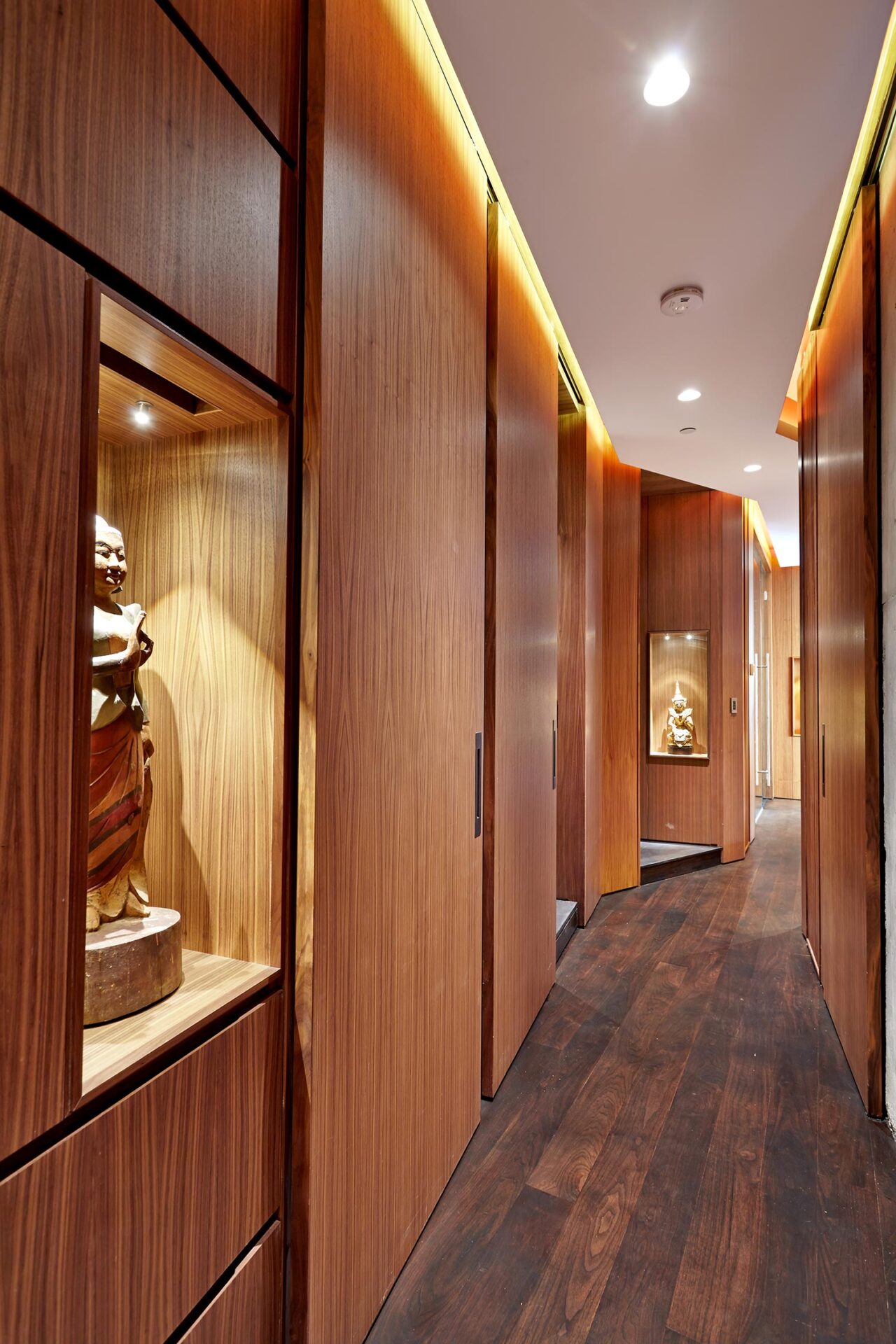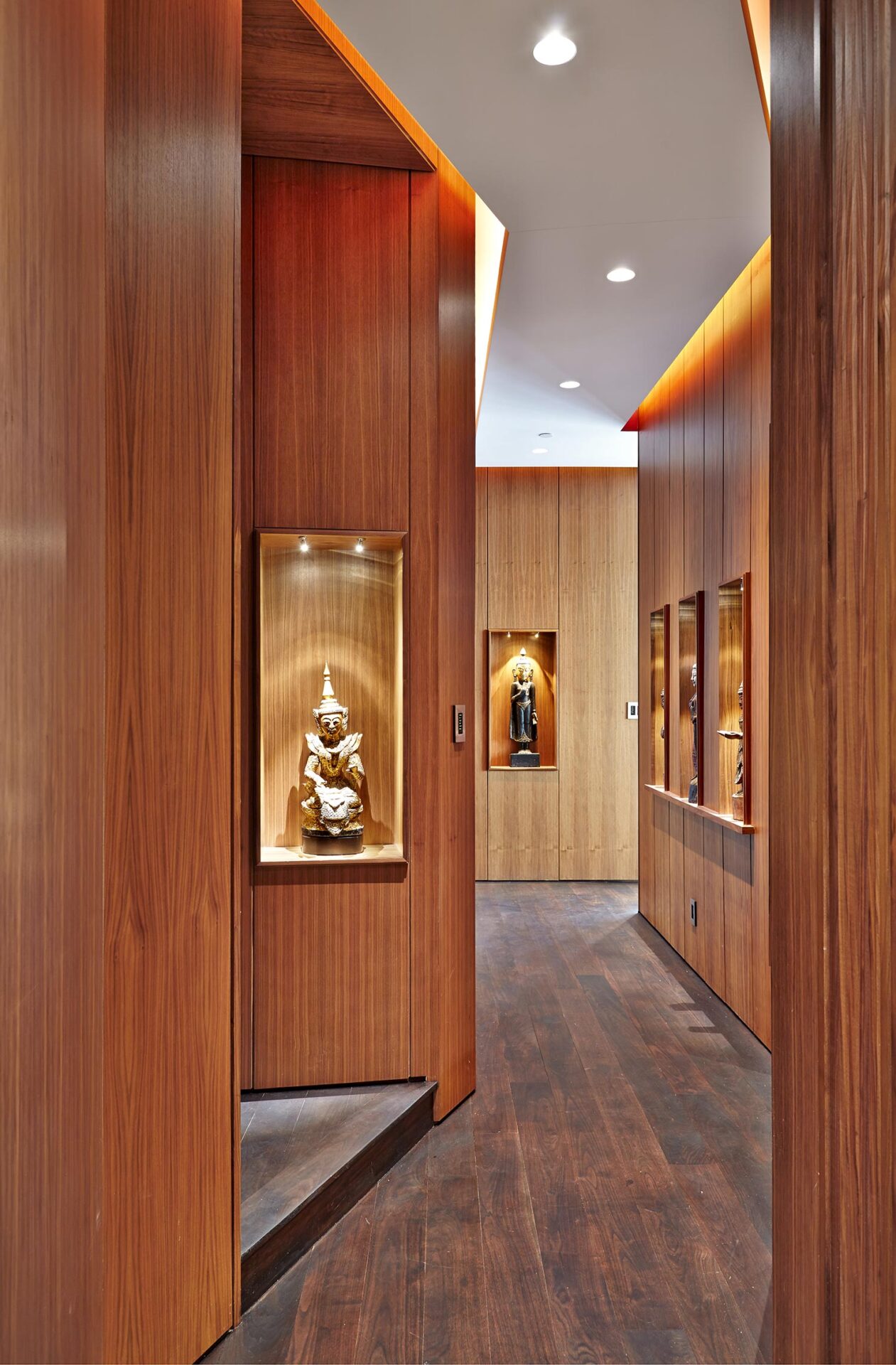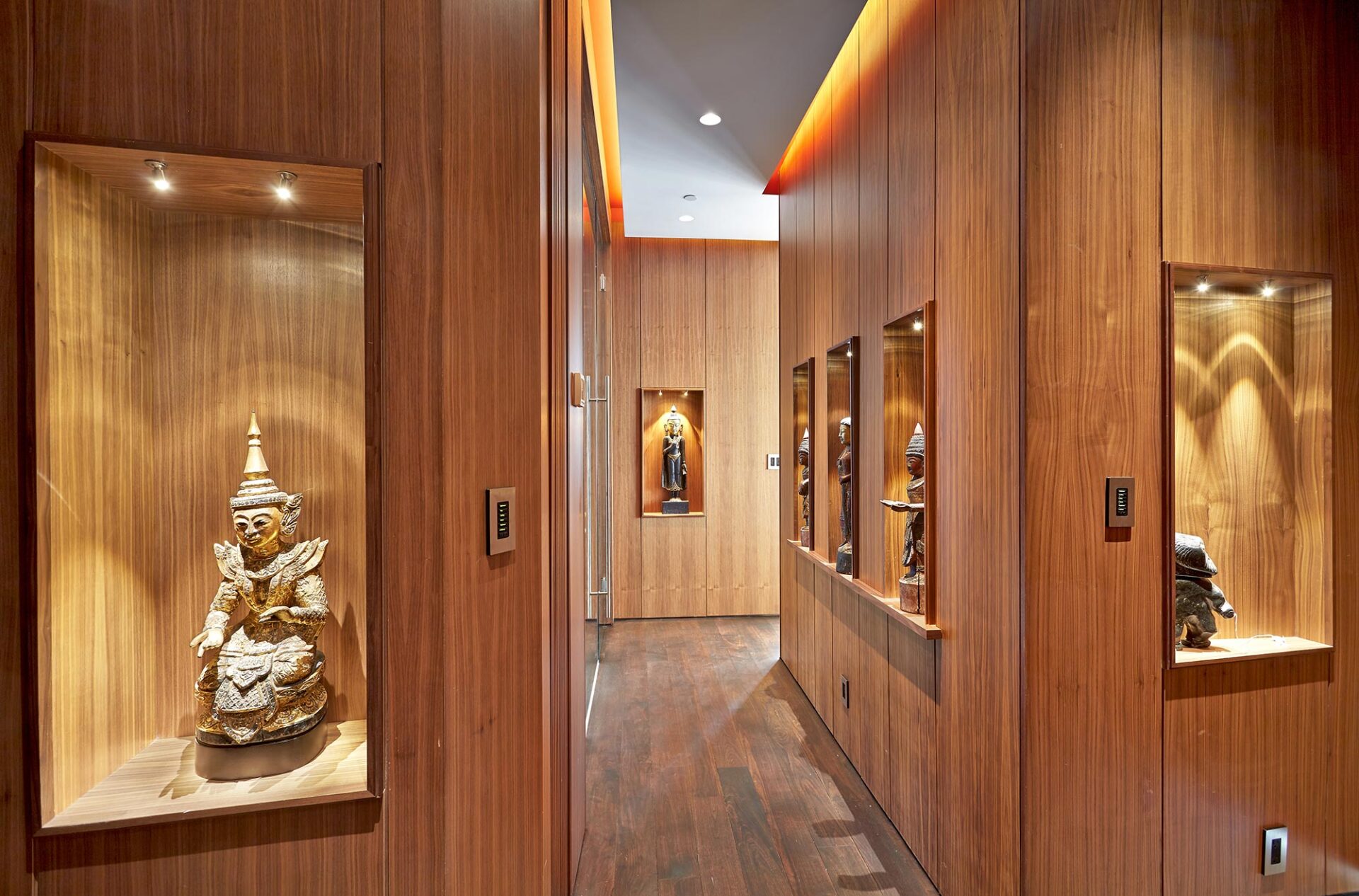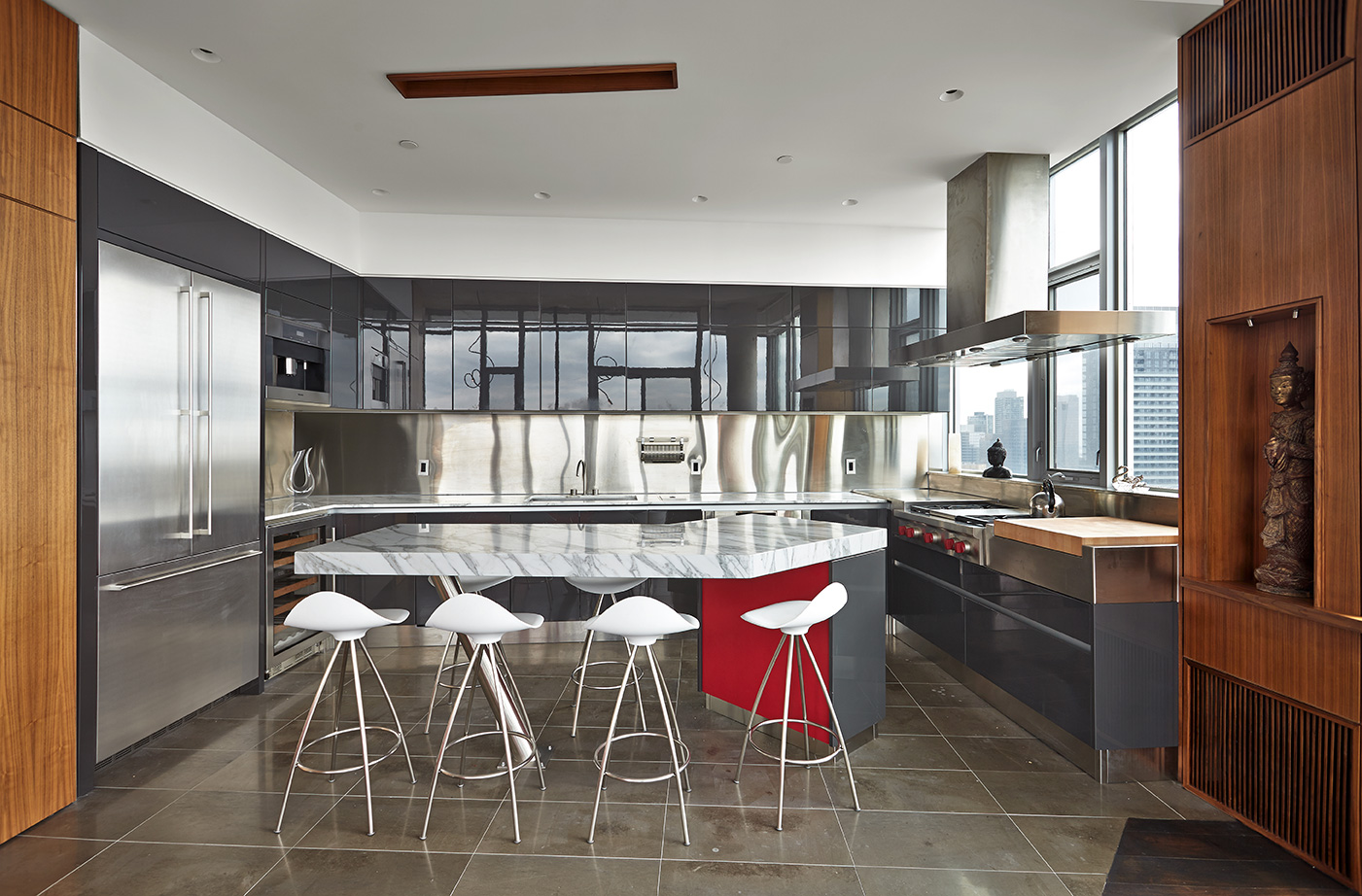Fichman Penthouse
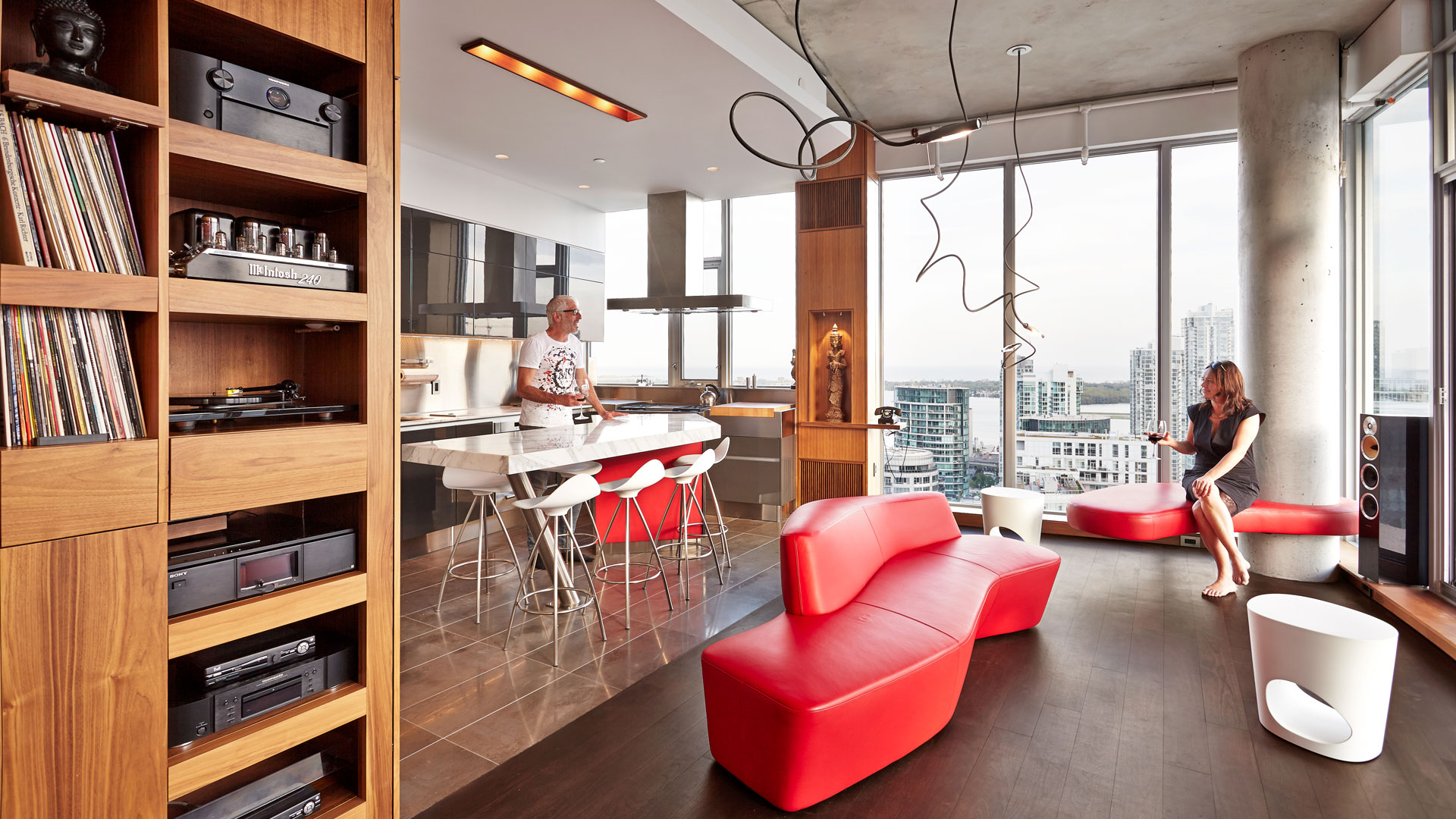
Fichman Penthouse
-
Location
Toronto, ON
-
Client
Niv Fichman
-
Dates
2009 - 2012
- Expertise
- Architecture
- Interiors
Treaty Lands
Toronto Purchase Treaty 13 (1805)
Indigenous Rights Holders
Mississaugas of the Credit First Nation
Historical Occupation
Anishinaabe, Attiwonderonk, Haudenosaunee, Huron Wendat
*Treaty, territory and historical occupation information has been included for educational purposes, and is meant to show respect for these caregivers. This information is not intended to be a finite view, nor is it intended to represent legal rights or definitive boundaries. To learn more about these matters, please contact the nations in question.
The Fichman project was developed through the skillful crafting of contemporary architectural detail, set against the backdrop of a rapidly transforming city. The design and construction of the penthouse emerged over five years.
The project is defined by a meandering promenade lined with matte-finished walnut. The bent corridor continuously re-orients visitors and directs them towards carefully composed views of interior and exterior spaces. On display along the promenade is Niv Fichman’s collection of Asian art and religious sculptures, curated in softly lit niches, alcoves and grottos scaled for specific artworks.
Sliding panels conceal private spaces: a laundry, second bedroom, and library. Each surface serves multiple purposes: a desk becomes a wine-sorting shelf, a millwork grille becomes a fold-down ironing table, and a thickened millwork wall encloses mechanical and electrical equipment. In Japanese tradition, the sleeping futons are tucked away each day so that the recessed tatami mats can be used for work or entertaining. At centre-stage is a glamorous, free-standing bathtub, set atop a mahogany wood slatted floor. The custom Corian tub is fitted out with room for three, with a removable champagne bucket. Translucent pocket doors allow for varying degrees of privacy.
In the end, the millwork’s transformative nature allows it to be practical in application and delightful in every sense. It is a testament to the power of the iterative design process: over time, it has evolved into an architecture that is both complex and completely refined.
